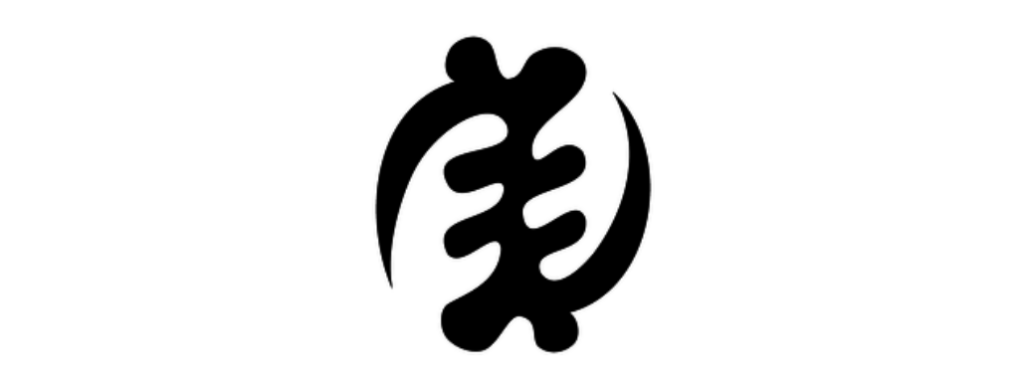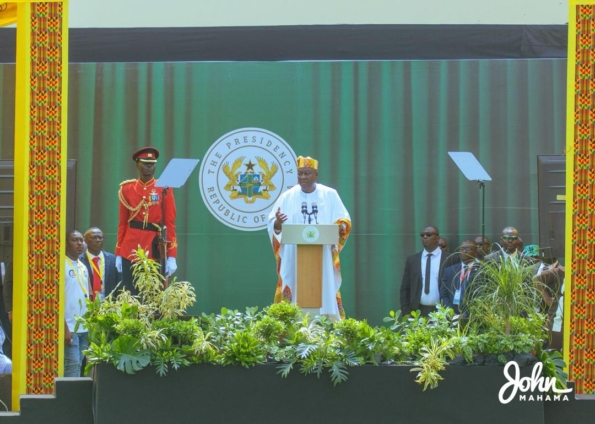On January 7, the man who secured a decisive victory in Ghana’s 2024 election made an equally commanding statement as he arrived at the Black Star Square for his inauguration.
President John Mahama, 66, took the Oath of Office and raised the glittering State Sword, a powerful symbol of authority, to a thunderous applause from the jubilant crowd.
However, it wasn’t just the ceremonial sword that captured the attention of Ghanaians at the venue and online on the sunny mid-morning.
Back at the helm at age 66 as Ghana’s 6th President in the 4th Republic. John Mahama. https://t.co/K2VlxPNaB2 pic.twitter.com/6QaNBXWPXt
— Kenneth Awotwe Darko (@TheKennethDarko) January 7, 2025
The saying, "Dress how you want to be addressed," resonated as Mr Mahama’s attire stood out.
He wore a white ‘Agbada,’ an outfit consisting of an inner garment of varying lengths and a pair of traditional trousers.
Popularised by the Yoruba people of Nigeria, the flowing robe is a traditional attire worn across West Africa.

Its cultural richness and authoritative elegance showed the weight of the occasion and nothing could have been more befitting.
Mr. Mahama’s unique twist featured two long kente embroideries flanking the three-piece attire.
The long kente design on the cloth matched the pattern of his hat.
The Kente design is named ‘Ɛmmerɛ Pa Da W'anim,’ which translates to Better Days Lie Ahead.
The Agbada signifies Ghana's commitment to regional integration, particularly in its role in promoting a united Africa.
With the multitude of heads of state and leaders who attended the occasion, the significance of the attire in this context cannot be overstated.
Noticeable at the centre of the attire were four Adinkra symbols.
They are, 'Gye Nyame', 'Sankofa', 'Dwennimmen' and 'Nyame Dua'.

The 'Nyame Dua' symbol translates to "Tree of God" which signifies God's presence and guardianship.
'Dweninmmen', located at the bottom, depicts the horns of a ram.

It symbolises strength, humility, wisdom, and learning. During the campaign, Mr Mahama indicated that he would be stiff in his corruption fight even in his own ranks, yet collaborative with the populace.
- Read also: Corruption fight: I’ve been exorcised from ‘father-for-all’ syndrome – Mahama pledges impartiality
Coupled with the strength of rams' horns, they can be very fierce, and intimidating and serve as a strong line defense.
The symbol also features strongly on the logo of the University of Ghana, the president's alma mater.
These seem to have informed his stylists' choice of symbol.
To the left was the Sankofa symbol, which signifies learning from the past.

This is particularly introspective, given that President Mahama's last two attempts at the presidency were unsuccessful after his first term.
Some experts attributed his defeat to inefficiencies and general frustration among the average Ghanaian.
Mr. Mahama appears to be signaling that he has taken note of these concerns and is ready to apply those lessons as he takes the helm once again.
Finally, to the right is the Gye Nyame, the most popular of all Adinkra symbols.

It represents the faith of Ghanaians, who believe in God’s involvement in every aspect of human life.
Essentially, the new president is emphasising the centrality of God in his administration.
Speaking during the event, President Mahama shared his vision for Ghana’s future, calling for a comprehensive reset to tackle the nation’s pressing challenges and pave the way for progress.
“Today marks the beginning of a new opportunity, an opportunity to redefine our governance and economic strategies. Together, we shall reset our beloved nation, Ghana,” he said.
As a whole, President John Mahama's contume communicated a profound message of strength, humility, reflection, and faith. Each symbol told a story, aligning his leadership with the values and aspirations of the Ghanaian people.
In the words of Virginia Woolf, "The connection between dress and war is not far to seek; your finest clothes are those you wear as soldiers."
With his culturally significant and symbolically charged ensemble, Mr Mahama presented himself not just as a leader, but as a soldier for progress, unity, and hope, ready to champion Ghana’s future.
As to whether these aspirations will actually be achieved, is only a matter of time.
Latest Stories
-
Ghana requires $6bn to implement comprehensive flood control measures – Minister
1 hour -
DDEP, not reforms, behind ratings boost – Economic Advisor Sharif Mahmud Khalid admits
1 hour -
Fitch upgrade: We’re not rushing to re-enter external markets – Sharif Mahmud Khalid
2 hours -
‘No-bra, no-exam’ rule at Nigerian university sparks outrage
2 hours -
Spain’s government blames huge blackout on grid regulator and private firms
3 hours -
World’s only twice-a-year shot to prevent HIV could stop transmission – if people can get it
3 hours -
Mobile banker jailed 5 years for stealing GH¢70,840
3 hours -
ECG equipment thief jailed 5 years
3 hours -
Trader jailed 12 years for defiling minor
3 hours -
NPP 2026 Primaries: Bawumia doesn’t need favours, we’re ready – Miracles Aboagye
4 hours -
Police arrest school proprietor for preventing BECE candidates from writing exam
4 hours -
Two arraigned for alleged illegal gold trade
4 hours -
GWL uncovers illegal water connection at Adwoa Wangara apartment in Cantonments
4 hours -
Education Minister opens CIHRM 2025 conference
5 hours -
The Pulse & Vbyz Experience: A Galdem DJ Mixtape
6 hours

